1. The Carol Burnett Show (1967–1978)
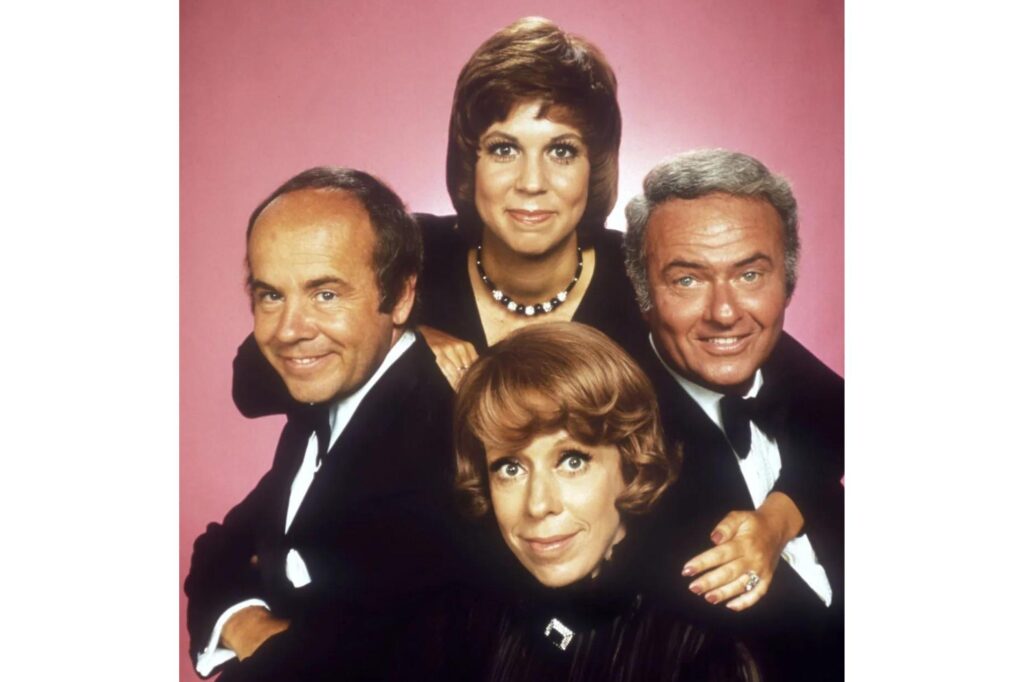
Before streaming and endless channels, the variety hour was TV’s crown jewel. These shows blended music, comedy, and personality into weekly events that families gathered around the living room to watch. Carol Burnett turned the variety hour into a showcase of brilliance. Her show combined sharp comedy sketches, elaborate musical numbers, and unforgettable guest appearances, all brought to life by her talented ensemble of Harvey Korman, Vicki Lawrence, Lyle Waggoner, and Tim Conway. Burnett herself was a trailblazer, proving that a woman could headline and carry such a demanding format. Famous moments, like the parody of Gone With the Wind where she appeared in a curtain-rod dress, remain etched in TV history. The show thrived because Burnett insisted on quality and chemistry, rehearsing tirelessly to ensure every joke landed. Over its 11-year run, it collected 25 Emmys and built a legacy as one of the funniest, most beloved variety shows ever made. Watching it felt like being part of an inside joke that millions of Americans shared.
One overlooked strength of The Carol Burnett Show was its live studio audience interaction. Burnett opened every episode with a Q&A session, taking questions from everyday people and answering with honesty, warmth, or quick wit. This broke down the wall between performer and viewer, making her show feel personal in a way that many others didn’t. The costumes and set pieces, designed by Bob Mackie, also added a theatrical scale rarely seen on weekly television. Beyond comedy, the series gave audiences elaborate musical medleys that showed off Burnett’s vocal talent, reminding viewers that she wasn’t just a comedian but also a seasoned performer. The show also bridged generations whereby grandparents could laugh at the slapstick sketches while younger audiences enjoyed the satire. Burnett’s decision to end the series on her own terms in 1978, rather than stretch it past its natural run, reflected her respect for the craft and the audience. That choice has helped preserve its legacy as a show remembered for consistent quality rather than decline.
2. Rowan & Martin’s Laugh-In (1968–1973)
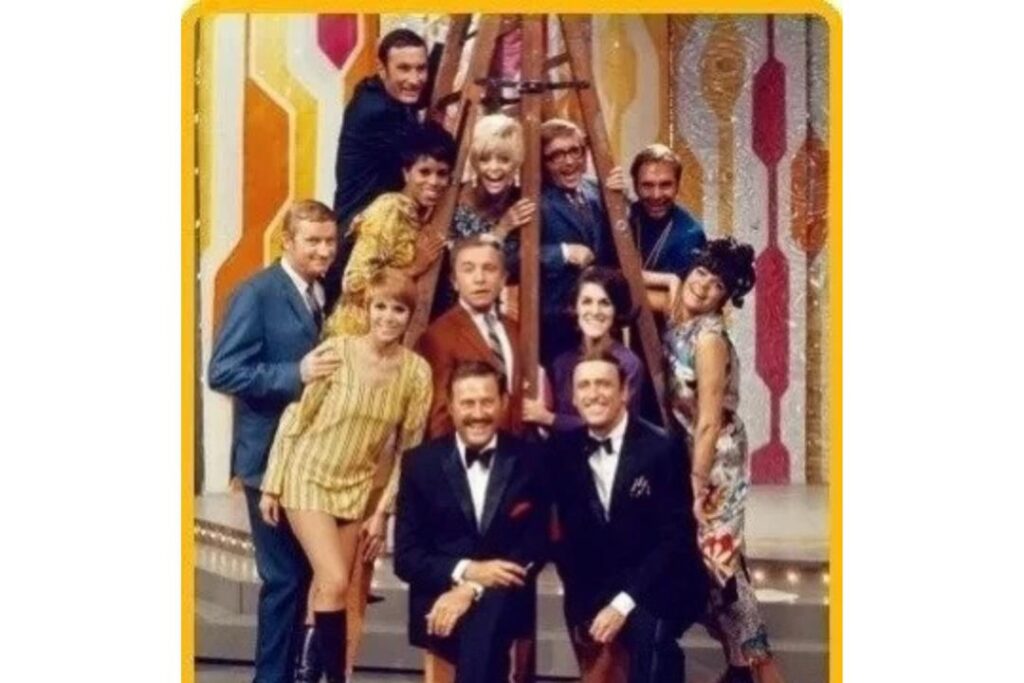
Laugh-In was unlike anything else on television. Hosted by Dan Rowan and Dick Martin, the show was famous for its lightning-fast sketches, psychedelic energy, and bold willingness to tackle taboo topics with humor. It became a launchpad for stars like Goldie Hawn and Lily Tomlin, and catchphrases such as “Sock it to me!” became part of everyday language. Even President Richard Nixon made a surprise cameo, showing how culturally powerful the show had become. Behind the scenes, the pace was just as frantic, with writers scrambling to deliver fresh material and producers constantly reinventing segments to keep the momentum alive. For a few years, Laugh-In was not only the top-rated show in America but also a mirror of the late ’60s, capturing the collision of comedy, politics, and counterculture in one colorful, chaotic package.
What made Laugh-In revolutionary was its editing style. Unlike traditional variety shows that relied on long sketches or musical numbers, this program jumped rapidly between jokes, blackout gags, and visual cutaways, reflecting the influence of both pop art and advertising. The frenetic pace matched the cultural shifts of the late 1960s, when television was competing with the energy of rock music, political protests, and youth culture. The show’s set designs leaned heavily on bold colors and psychedelic imagery, giving it a look that stood apart from the polished glamour of earlier TV. Its format also anticipated the way future audiences would consume short, fast bursts of content, not unlike today’s social media clips. International versions of Laugh-In appeared in other countries, showing how adaptable the concept was. The fact that so many viewers could follow such a whirlwind format each week proved that television was evolving into a medium capable of reflecting, and even amplifying the cultural noise of its time.
3. The Sonny & Cher Comedy Hour (1971–1974, 1976–1977)
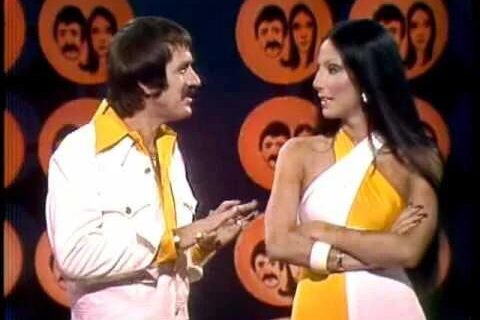
Sonny and Cher brought their real-life marriage, music, and playful banter to the screen in a way that instantly connected with audiences. The show featured elaborate musical numbers, clever sketches, and plenty of moments that leaned on Cher’s dry wit and Sonny’s lovable goofiness. Costume designer Bob Mackie helped shape Cher’s glamorous, sometimes daring image, making her a fashion icon while also pushing the limits of what TV censors allowed at the time. The program’s success proved that viewers loved not only the performances but also the couple’s natural chemistry, whether teasing each other or delivering one-liners. Even when their personal relationship unraveled, audiences were still fascinated, and their variety hour became a cultural time capsule of the 1970s.
While audiences often focused on Sonny and Cher’s banter, one of the show’s innovations was its ability to blend contemporary pop culture with variety traditions. Cher, in particular, used the platform to showcase bold performances of chart-topping songs, sometimes delivering them in character or against elaborate stage backdrops. The program also experimented with recurring comedy sketches that gave audiences reasons to tune in weekly for favorite bits, not just musical guests. One of the strongest elements was the way the show appealed to multiple demographics: younger fans watched for Cher’s edgy style and music, while older viewers appreciated the comedy routines and Sonny’s approachable humor. When the couple reunited professionally in 1976, it showed how strong the brand of their show had been, and viewers were still invested even after their personal split. In many ways, the program proved that the right mix of personality and performance could transcend personal drama and remain a cultural talking point.
4. The Dean Martin Show (1965–1974)
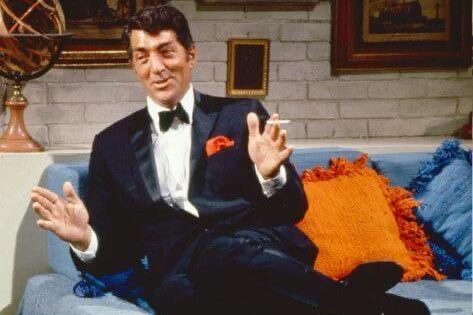
Dean Martin brought a lounge-like ease to the variety format that no one else could replicate. Each week, he appeared with a drink or cigarette in hand, his trademark grin, and a seemingly casual attitude toward the whole production. The truth was that Dean famously disliked rehearsals, so producers cleverly built the show around that persona by using cue cards and spontaneous guest interactions. The result was a program that felt loose, charming, and filled with surprises, from musical duets to comic sketches that often had Martin laughing as much as the audience. The mix of Hollywood stars and Martin’s effortless charisma created the feeling of a glamorous party that viewers were lucky enough to attend from their living rooms. It became a weekly ritual that embodied cool confidence, proving that sometimes less polish could mean more charm.
A fascinating aspect of The Dean Martin Show was the “Celebrity Roast” segments, which began as part of the program before becoming their own television specials. These roasts gathered stars to playfully insult and celebrate a guest of honor, blending humor with a sense of Hollywood camaraderie. Martin’s ability to attract such a broad guest list from comedians to political figures spoke to his reputation as a unifying entertainer. The program also gave prominence to Martin’s music, showcasing him as more than a Rat Pack sidekick but a solo star with vocal chops that could carry sentimental ballads and playful numbers alike. Unlike some hosts, Martin didn’t shy away from letting guests take the spotlight, which kept the show fresh and unpredictable. His relaxed approach to hosting reflected a time when television was experimenting with less formal structures, setting the stage for later hosts who prioritized charisma and personality over rigid scripts. The result was a show that redefined how casual charm could thrive in a demanding weekly format.
5. The Flip Wilson Show (1970–1974)
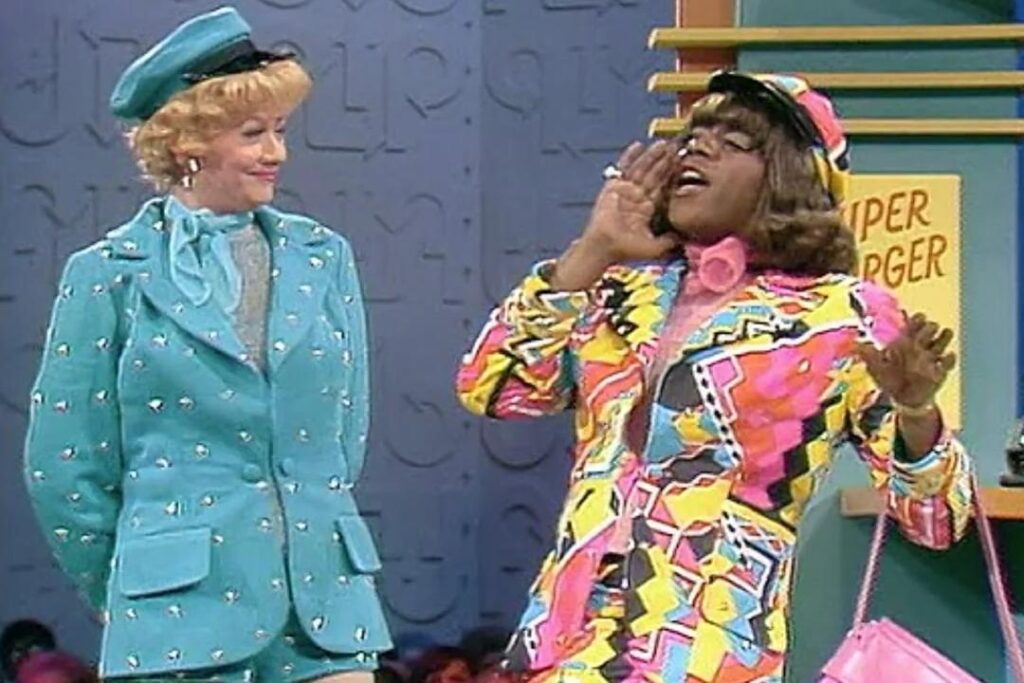
Flip Wilson made television history by becoming the first Black comedian to host a top-rated variety show, and he did it with humor, warmth, and creativity. His character Geraldine Jones, with the famous line “What you see is what you get,” became a national sensation. But the show was more than catchphrases; it featured a mix of stand-up, sketches, and some of the biggest musical acts of the time, including Ray Charles and Aretha Franklin. Wilson was also a smart producer, ensuring the show had high production values and secured top-tier guests. In doing so, he broke barriers for performers of color on television, while entertaining millions of households with comedy that was sharp but also inviting. The show’s influence stretched far beyond its four-year run, cementing Flip Wilson as a television pioneer.
Beyond the comedy characters, The Flip Wilson Show made an impact through the caliber of musicians it featured. Legendary artists like The Jackson 5, Stevie Wonder, and Aretha Franklin regularly appeared, making the program a vital stage for showcasing Black talent at a time when opportunities on mainstream television were still limited. The musical performances often rivaled what viewers would later expect from shows like Soul Train or Saturday Night Live. Wilson’s sketches also leaned into surreal humor at times, using unexpected twists that made him stand out from more traditional hosts. Another notable detail was the show’s consistent ratings dominance — it ranked in the top five for multiple seasons, proving Wilson wasn’t just breaking barriers but also leading in popularity. His insistence on owning the rights to his material and controlling production decisions was rare at the time and paved the way for comedians to demand greater creative authority. The combination of groundbreaking representation, musical excellence, and smart business sense made the show an essential piece of television history.
6. The Smothers Brothers Comedy Hour (1967–1969)
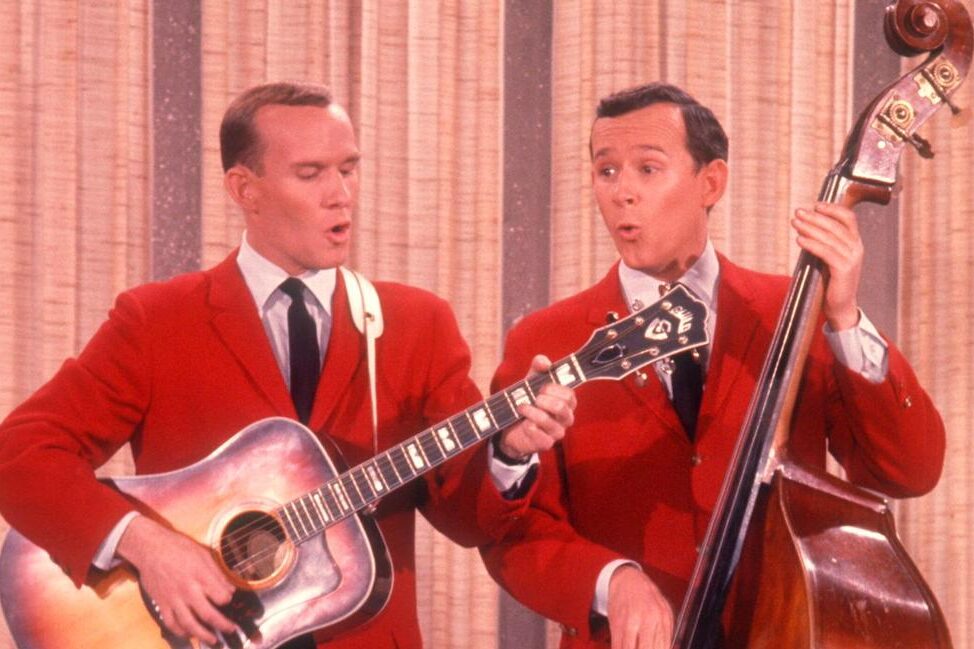
Tom and Dick Smothers carved out a unique space on television with their mix of folk music, sibling banter, and sharp political satire. Unlike most variety shows, theirs wasn’t afraid to confront controversial issues head-on, from Vietnam to civil rights. Their young writing team included rising talents like Steve Martin, Rob Reiner, and Bob Einstein, who helped push boundaries with daring sketches. The constant battles with CBS censors became as famous as the show itself, with entire segments cut or altered before broadcast. Eventually, the tension boiled over, and the network abruptly canceled the show despite strong ratings. In retrospect, the Smothers Brothers’ willingness to take risks paved the way for politically engaged comedy that came later, proving that a variety hour could be both entertaining and socially meaningful.
What made The Smothers Brothers Comedy Hour truly unique was its fearless approach to questioning authority during primetime television. Beyond topical jokes, the show brought in artists like Joan Baez and Pete Seeger, who used the platform to sing songs tied to social movements. This made the series a cultural touchstone for younger audiences who rarely saw their perspectives represented on major networks. The Smothers brothers themselves were unusual hosts — part folk singers, part comedians, they blurred the line between performance and activism. Even the behind-the-scenes battles with CBS became part of its legacy, with episodes pulled or censored due to controversial sketches. The eventual cancellation only amplified the show’s cultural importance, as it came to symbolize the tension between free expression and network control. Looking back, its brief run demonstrated how television could serve as more than entertainment, it could be a battleground for generational change.
7. The Ed Sullivan Show (1948–1971)
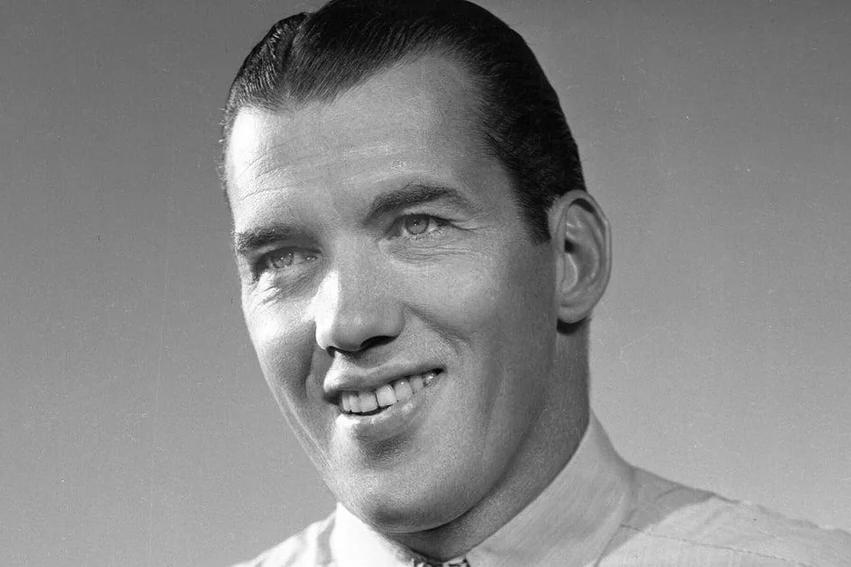
Ed Sullivan wasn’t a natural entertainer, stiff, awkward, and famously uncomfortable on camera, but he became the ultimate host of one of television’s most important variety shows. His program was a cultural landmark where audiences witnessed historic performances, from Elvis Presley’s electrifying hip-shaking debut to the Beatles’ first U.S. appearance in 1964. Sullivan also gave a platform to countless Black performers, such as The Supremes, Sammy Davis Jr., and Richard Pryor, bringing diversity into American living rooms during an era of social change. Behind the scenes, Sullivan was known for his temper, but his instinct for spotting talent was unmatched. For over two decades, his show was the place where stars were made and cultural moments unfolded, turning Sunday nights into a national event.
While best remembered for Elvis and The Beatles, The Ed Sullivan Show was just as important for its role in giving exposure to performers from diverse backgrounds. Sullivan personally made efforts to book African American artists like Nat King Cole, Ella Fitzgerald, and The Supremes at a time when segregation still shaped much of American entertainment. He also showcased comedians from immigrant backgrounds, expanding the range of voices seen on national television. The show’s Sunday night slot became a ritual for families, where everyone, regardless of age could find something to enjoy. Sullivan’s stiff delivery and lack of stage charisma ironically made him the perfect host, because he let the acts shine rather than overshadowing them. Over its 23-year run, the program created a shared cultural experience that few shows could match, turning living rooms into front-row seats for history in the making.
8. Hee Haw (1969–1971 on CBS; syndicated until 1993)
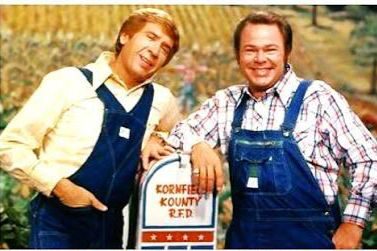
At a time when slick, big-city variety shows dominated the networks, Hee Haw offered something entirely different: down-home humor mixed with top-notch country music. Hosted by Buck Owens and Roy Clark, the show leaned into corny jokes, barnyard gags, and small-town skits while showcasing country’s biggest stars, including Dolly Parton and Johnny Cash. Critics dismissed it as lowbrow, but audiences loved its charm, and its popularity in syndication kept it on the air for nearly 25 years. The format’s strength was its simplicity, alternating between silly comedy and heartfelt music, which made it feel like a friendly gathering in someone’s backyard. Hee Haw proved that variety didn’t always need glitz and glamour; it could succeed by speaking directly to heartland America.
One of Hee Haw’s strengths was how it leaned into regional pride at a time when rural America often felt overlooked in mainstream media. The show’s cornfield jokes, “pickin’ and grinnin’” segments, and recurring characters celebrated small-town humor without apology. While it was lighthearted on the surface, its format helped preserve elements of rural storytelling and comedy traditions that might otherwise have faded. Interestingly, the program succeeded without needing the approval of critics, who often dismissed it as lowbrow — yet its syndication run proved that audiences had the final say. Another layer to its appeal was the musical authenticity: unlike some variety shows that booked a mix of genres, Hee Haw remained firmly dedicated to country and bluegrass artists, giving the genre a national television stage for decades. This consistency made it feel like a weekly gathering place for fans, and even today, reruns keep that sense of nostalgia alive.
9. The Glen Campbell Goodtime Hour (1969–1972)
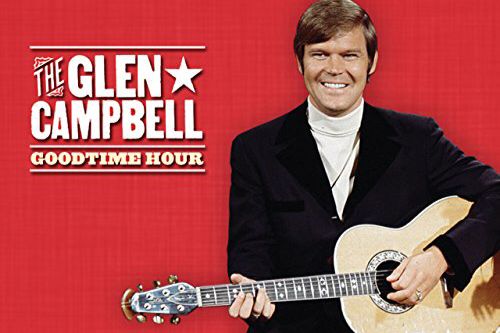
Glen Campbell was already a music star when he launched his variety show, but the program broadened his appeal far beyond country fans. Each week, he delivered polished musical performances alongside guest stars ranging from Johnny Cash to Linda Ronstadt. The show balanced music with comedy sketches, often highlighting Campbell’s self-deprecating humor, which helped ease his stage fright. Campbell’s friendly, approachable personality made viewers feel like they were sharing an evening with him rather than watching a staged production. Though it only lasted three years, the show helped bridge the gap between country and pop, reinforcing Campbell’s status as a versatile entertainer and leaving behind memorable duets and moments that showcased his genuine charm.
Beyond Glen Campbell’s on-camera charm, the show served as a rare televised showcase for the craft of studio musicianship. Campbell himself had been a top Los Angeles session player before fame, and that background shaped the program’s musical DNA: arrangements were tight, band fills were tasteful, and instrumental breaks were treated as features rather than throwaways. The series frequently highlighted arrangers, horn sections, and backing vocalists — the hidden collaborators who make records sound bigger than the singer alone. That emphasis helped demystify the record business for viewers; fans could see how a pop-country crossover tune came together onstage with precision and polish. The production also experimented with transitions that mimicked studio crossfades, using brief instrumental interludes instead of visual bumper music. For young musicians watching at home, the show was a subtle masterclass in professionalism: timing, tone, and how to support a lead without stealing the spotlight. In doing so, The Glen Campbell Goodtime Hour quietly raised the profile of session players and arrangers in an era when star names usually took all the credit.
10. The Julie Andrews Hour (1972–1973)
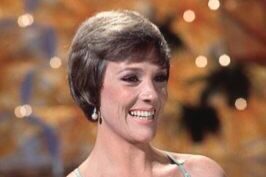
Julie Andrews entered the variety landscape with high expectations, bringing her unmistakable voice and theatrical flair to television. Her show featured elaborate production numbers, heartfelt interviews, and guest appearances from some of the biggest stars of the era. Critics adored the program, praising Andrews for her professionalism and artistry, and it even won Emmy Awards. Yet, despite the quality, it struggled to draw large audiences in a shifting TV landscape. Weekly variety hours were becoming harder to sustain, and Andrews’ polished, Broadway-style approach didn’t always match the more casual tastes of viewers at the time. The show ended after just one season, but its brief run is still remembered as an example of television done with elegance and care, proving that even short-lived efforts can leave a lasting impression.
Julie Andrews brought a theatrical sensibility to television that went beyond mere song-and-dance. Her show often acted like a condensed musical theatre program: numbers were staged with narrative logic, choreography served character, and songs functioned as storytelling devices rather than isolated showcases. Andrews’ training in classical and stage repertoire also allowed the program to bridge highbrow material with mainstream tastes — audiences might hear a show tune reimagined as a pop medley or catch a fully staged dramatic vignette between musical segments. The production values reflected this ambition: lighting, camera movement, and set changes were designed to mimic a small-scale Broadway run, giving TV audiences a taste of theatrical production that few weekly shows attempted. The series also occasionally used long-form pieces such as extended duets or mini-scenes that invited viewers to invest in a sustained emotional arc within a single episode. While those choices made ratings harder to secure, they left a legacy: The Julie Andrews Hour demonstrated how television could be a laboratory for adapting theatrical storytelling to the small screen.
11. The Hollywood Palace (1964–1970)
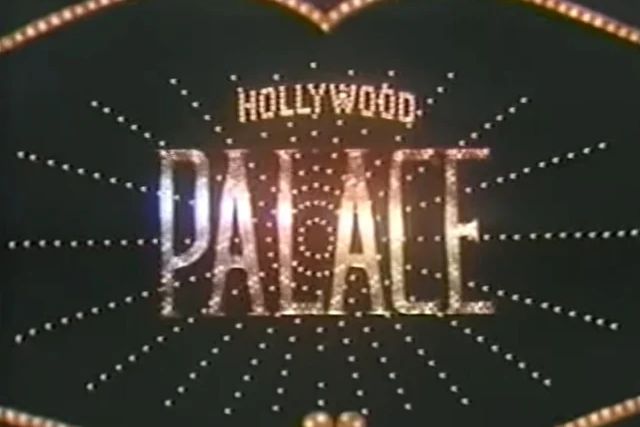
The Hollywood Palace was ABC’s glitzy answer to Ed Sullivan, staged like a Las Vegas revue and featuring a rotating lineup of celebrity hosts. Bing Crosby was the most frequent emcee, but everyone from Judy Garland to Diana Ross took a turn. Each episode was a spectacle, with elaborate set designs, acrobatic acts, comedy routines, and musical performances that gave Saturday nights a sense of grandeur. Behind the glamour, producers faced the constant challenge of balancing so many different performers and styles into a seamless show. While it never quite eclipsed Sullivan in influence, The Hollywood Palace carved out its own reputation for star power and big-budget entertainment. For many viewers, it was a dazzling weekly escape into Hollywood’s world of music and variety.
What set The Hollywood Palace apart was how it functioned as a proving ground for large-scale production techniques that would later become standard in television specials. Because hosts rotated weekly, the show’s producers needed a nimble technical operation: rapid set strikes, multi-camera choreography tailored to different headliners, and flawless timing for specialty acts like trapeze artists or animal trainers. That technical discipline raised the bar for live television staging; crews learned to design modular sets and use camera blocking as a storytelling tool rather than mere coverage. The show also became a testing ground for guest acts that required complex staging of juggling troupes, international novelty acts, and big ensemble numbers — helping television expand beyond simple stage performances. Behind the scenes, producers experimented with pacing and sequencing (how to flow from acrobatics to comic bits to ballads without losing viewers), and those lessons influenced the pacing of later variety programs and one-off TV specials. In short, The Hollywood Palace was as much a workshop for TV production craft as it was a showcase for stars.
12. Tony Orlando and Dawn (1974–1976)
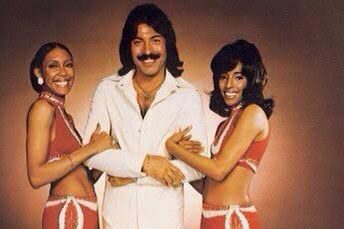
Riding the success of chart-topping hits like “Tie a Yellow Ribbon Round the Ole Oak Tree,” Tony Orlando and Dawn brought their infectious energy to television. The trio, Orlando, Telma Hopkins, and Joyce Vincent Wilson, filled the show with lively musical numbers, playful banter, and guest appearances that leaned into good-natured fun. While critics often dismissed it as lightweight, audiences enjoyed its cheerful tone and family-friendly spirit. The show stood out for its focus on positive energy and catchy performances rather than heavy satire or political commentary. Though it ran only two seasons, Tony Orlando and Dawn captured the upbeat mood of mid-’70s TV, proving that sometimes pure entertainment was enough to keep viewers coming back.
One fresh lens on Tony Orlando and Dawn is its quietly modern approach to visual storytelling within musical performances. Rather than just placing singers on a bare stage, the show often used small narrative vignettes and filmed inserts to extend a song’s emotional life to think short, melodramatic sequences that provided context for a ballad or an upbeat number framed by a brief comedic scene. These pre-taped elements gave the show a hybrid feel: part variety hour, part music short film. That practice anticipated how later TV programs and music videos would use visual narrative to deepen a song’s impact. The show also leaned into ensemble staging such as spotlighting the chemistry between Orlando and his two singers through coordinated blocking and call-and-response arrangements, which helped spotlight backing vocalists as visible partners rather than anonymous support. By blending cinematic inserts with tight onstage choreography, Tony Orlando and Dawn subtly modernized the televised musical number for mid-’70s audiences.
13. The Mac Davis Show (1974–1976)
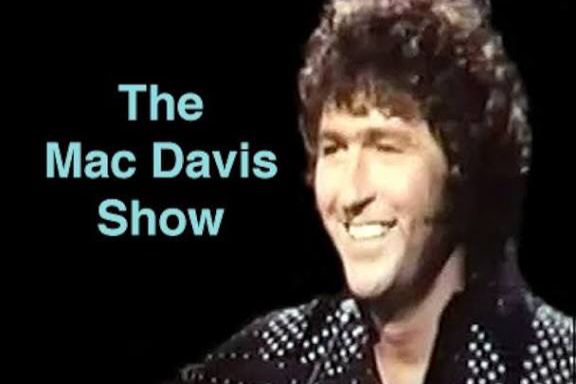
Singer-songwriter Mac Davis, known for hits like “Baby Don’t Get Hooked on Me,” brought a relaxed, personable style to his variety show. Blending music with comedy and guest appearances, the program had a welcoming tone that felt more like a casual hangout than a tightly scripted production. Davis often mixed his own performances with duets and skits featuring stars from both country and pop music, giving the show wide appeal. His sense of humor and easygoing charm helped smooth the edges of weekly television, even if the show didn’t become a blockbuster hit. For the two years it aired, The Mac Davis Show was a comfortable, middle-of-the-road entry in the variety tradition, remembered for its warmth more than spectacle.
Mac Davis’s background as a songwriter gave his show a distinct editorial voice: episodes often foregrounded story songs and the craft behind them. Rather than treating songs as mere performances, the program sometimes highlighted the narrative that inspired a tune through on-air commentary, conversational interviews, or staged vignettes that dramatized a lyric’s meaning. That approach turned a variety hour into a mini-lesson in songwriting, introducing viewers to how a lyric, chord change, or turn of phrase creates emotional payoff. The show also became a gentle bridge between Nashville’s storytelling tradition and television’s appetite for personal honesty, allowing country-rooted lyricism to resonate with pop audiences. In doing so, Mac Davis used his platform to celebrate the writer’s perspective of making the songwriter’s role visible and, in some cases, inviting other songwriters to perform stripped-down versions of their work so viewers could appreciate the craft underneath the studio gloss.
14. Cher (1975–1976)
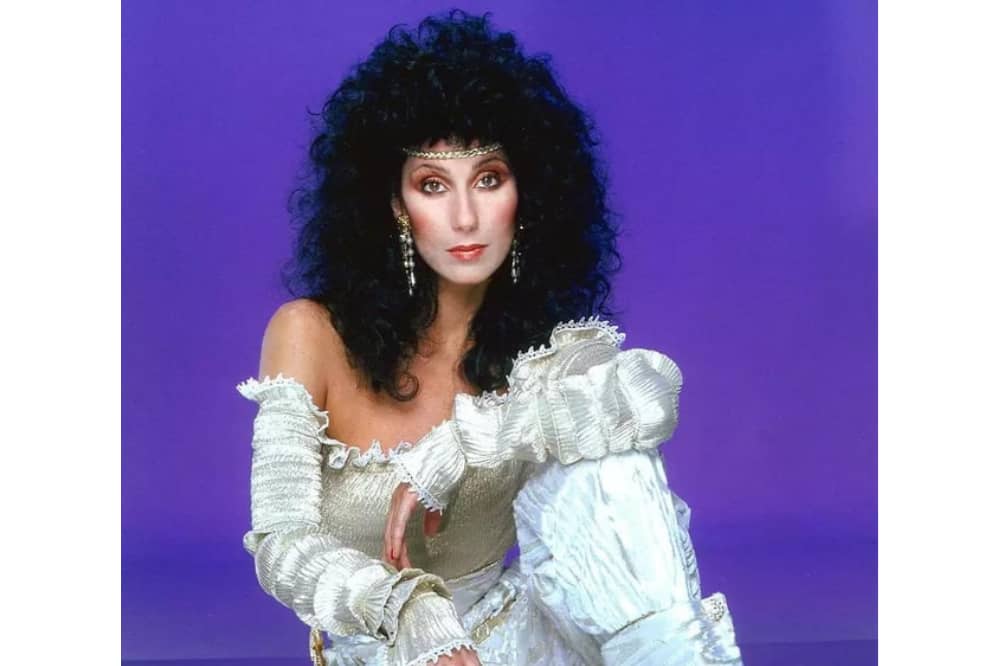
After splitting from Sonny, Cher stepped into the spotlight on her own and proved she could carry a variety show by herself. With her powerhouse vocals, playful sense of comedy, and eye-popping Bob Mackie costumes, Cher created a program that was visually stunning and musically eclectic. Each week, she welcomed major stars and performed elaborate numbers that highlighted her versatility as both a singer and entertainer. Behind the glamour, Cher was balancing her TV career with her growing presence in music and film, making the workload intense. While the show lasted just one season, it reinforced Cher’s status as a star who could command any stage, television included, and cemented her reputation as a bold, trend-setting performer.
Cher’s solo hour offered an early template for how a pop star could use television to constantly reinvent an image. Beyond big costumes and vocal showcases, the show experimented with persona shifts within a single episode: one segment might present Cher as a sultry pop balladeer, the next as a comic character, and later as an intimate storyteller. Those quick pivots trained audiences to accept fluid identities on a weekly basis, a concept that would become central to pop stardom in later decades. The program also used staging and lighting to create tonal contrast of moody, cinematic backdrops for dramatic songs, bright, kinetic staging for upbeat numbers by giving each performance its own visual grammar. By treating television as a place for ongoing reinvention rather than a static promotional stop, Cher’s show foreshadowed how future artists would use televised appearances to test new musical directions and cultivate an evolving public persona.
15. The Andy Williams Show (1962–1971, with later specials)
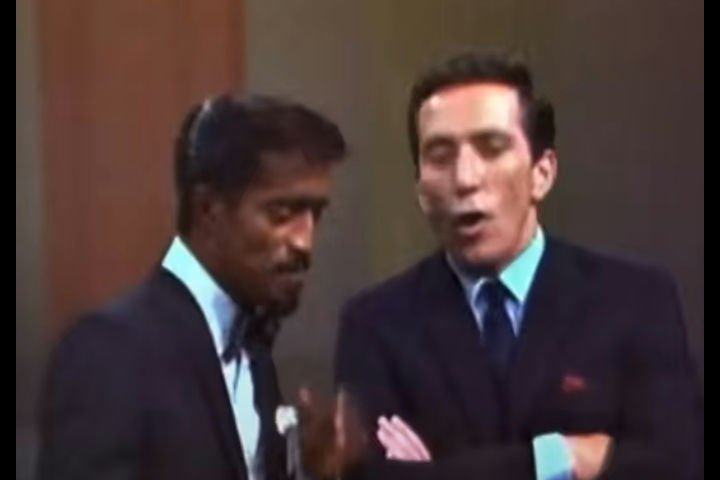
Andy Williams’ variety show was the definition of comfort viewing. With his smooth voice and gentle stage presence, Williams created a program that appealed to families looking for wholesome entertainment. The show became famous for launching the Osmonds, who made their national debut as regular performers, and for its Christmas specials that became a beloved holiday tradition. Williams struck a balance between middle-of-the-road musical fare and high-quality guest talent, drawing big names while keeping the tone warm and inviting. Though it wasn’t flashy, the consistency and charm of The Andy Williams Show kept it on the air for nearly a decade, proving that simple sincerity could be just as powerful as spectacle.
Aside from launching acts, The Andy Williams Show helped refine the formula for themed television evenings that networks could reliably sell to advertisers: holiday specials, decade retrospectives, and family nights with recurring motifs. Williams and his producers developed a dependable template of warm host monologue, a mix of established and emerging guests, and a closing number that tied the hour together, and made the program a handy franchise platform for special programming. This repeatable structure proved valuable to networks because it could be adapted for seasonal or topical broadcasts while maintaining audience comfort. The show’s emphasis on polished, orchestrated numbers and careful sequencing also influenced the way future musical specials were conceived, encouraging producers to think in terms of cohesive hour-long moods rather than loose, unrelated segments. That structural influence is one reason why Williams’ style endured in television holiday programming for decades.
16. The Perry Como Show (1948–1963 in various formats)
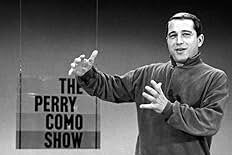
Perry Como became a Sunday night staple with his calm demeanor and effortless singing style. His variety show combined music, comedy sketches, and guest appearances that highlighted the biggest stars of the day. Audiences loved Como for his unflappable personality, no matter what happened on stage, he remained steady and approachable, like a trusted friend in their living rooms. While other hosts relied on flashy gimmicks or heavy comedy, Como’s strength was his ability to connect through warmth and consistency. Over its long run in different versions, The Perry Como Show earned loyalty by never straying too far from what viewers wanted: an evening of good music, lighthearted fun, and Como’s reassuring presence.
A hallmark of The Perry Como Show was its emphasis on relaxation during a time when television often leaned into fast-paced spectacle. Como’s style was so casual that he famously performed much of his material while seated, creating a living-room intimacy few other hosts could match. His wardrobe; often simple cardigans or suits became part of his image, contrasting sharply with the glitz of competing programs. The show also became known for special theme nights, such as holiday broadcasts that built Como’s reputation as a staple of American Christmas entertainment. Behind the scenes, Como’s professional musicianship set a high bar for live performances, with his steady vocals rarely needing multiple takes. While other variety hosts relied heavily on comedy or high-energy antics, Como built his success on a gentle pace and sincerity, making his show feel like a weekly invitation into his home.
17. The Kraft Music Hall (TV era, 1958–1971)
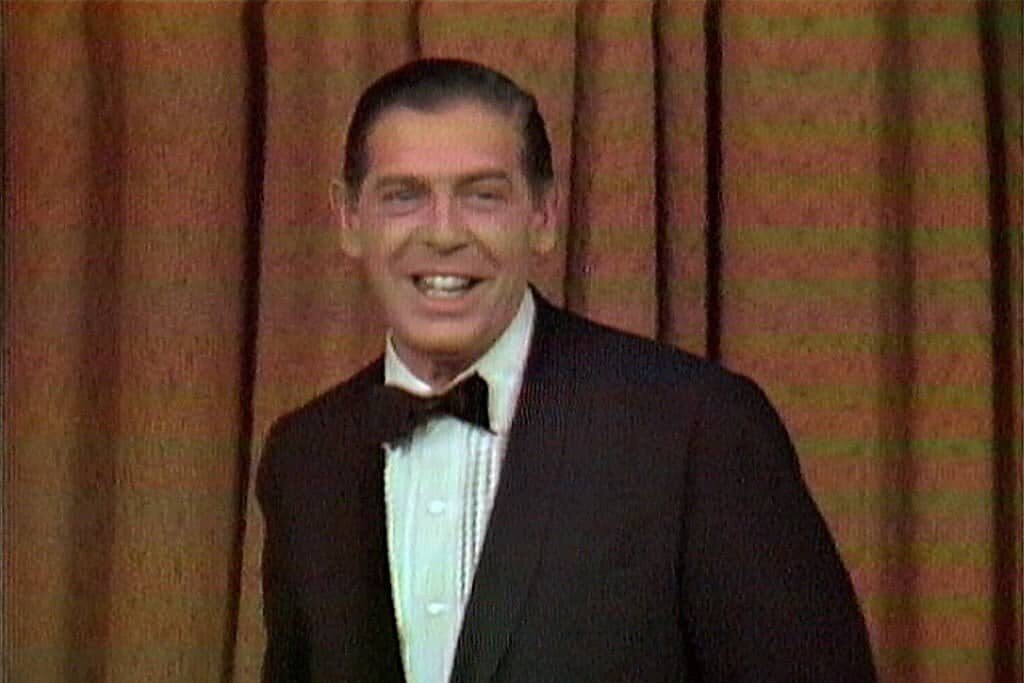
Originally a legendary radio program, The Kraft Music Hall transitioned into television as a prestigious platform for a rotating cast of hosts and performers. Sponsored by Kraft Foods, the show featured comedy sketches, musical numbers, and novelty acts that gave both established and emerging talent a national spotlight. While the sponsorship-driven structure sometimes limited creative risks, the program’s wide reach made it an important launching pad for future stars. Its mix of variety and tradition helped maintain the link between old-time radio entertainment and the new medium of television, ensuring continuity as audiences adapted to their TV sets. For more than a decade, it served as a reliable showcase for popular entertainment.
Though born on radio, The Kraft Music Hall became a television institution that balanced tradition with experimentation. Its rotating hosts allowed audiences to see different personalities at the helm, from Perry Como to guest comedians, which gave the show flexibility in tone. One of its strengths was its commitment to presenting a wide array of talent — from opera singers to up-and-coming rock acts by broadening its cultural reach. The sponsorship by Kraft ensured high production values and frequent tie-ins, reminding viewers that variety shows often relied heavily on brand partnerships. The program also served as a transitional platform, bringing the formality of radio’s golden age into the more visual world of television, complete with orchestras and theatrical staging. Its long run reflected how important corporate-backed programming was in establishing network television as a dominant force in American households.
18. The Dinah Shore Chevy Show (1956–1963)
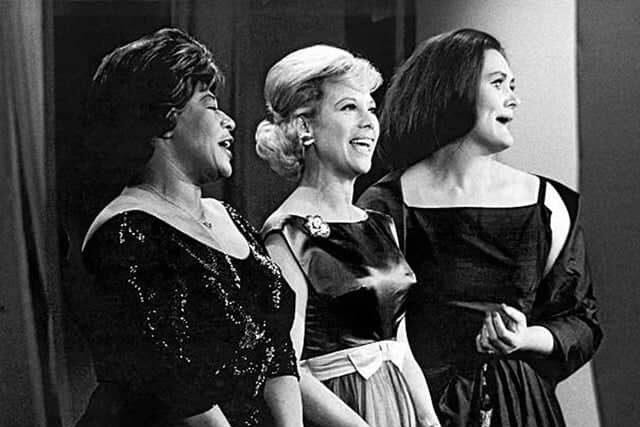
Dinah Shore brought warmth and charm to her weekly variety series, which carried the memorable closing jingle “See the U.S.A. in Your Chevrolet.” Her show blended musical performances with friendly guest conversations, making viewers feel as though they were part of an intimate gathering. Shore’s ability to put stars like Nat King Cole, Frank Sinatra, and Ella Fitzgerald at ease made her one of the few women to truly thrive as a variety host in the 1950s. The show also reflected her versatility as both a singer and personality, balancing glamour with genuine friendliness. Its mix of star power, music, and Shore’s approachable style made it one of the most memorable programs of its era.
Dinah Shore’s variety hour stood out not just for its music but also for her natural interviewing style. While most variety hosts leaned heavily on scripted comedy, Shore often engaged her guests in warm, conversational exchanges that gave audiences a sense of authenticity. Her famous closing theme — “See the U.S.A. in Your Chevrolet” — doubled as one of the most effective pieces of advertising in television history, making both her and Chevrolet household names. The show also highlighted the importance of women in television hosting, with Shore carving space in a male-dominated field by blending glamour with approachability. Many episodes showcased crossover talent, bringing Hollywood actors into musical performances or casual skits, helping break down the boundaries between film, music, and television. Her influence extended beyond the program itself, shaping future TV talk-and-variety hybrids that followed.
The Pat Boone Chevy Showroom (1957–1960)
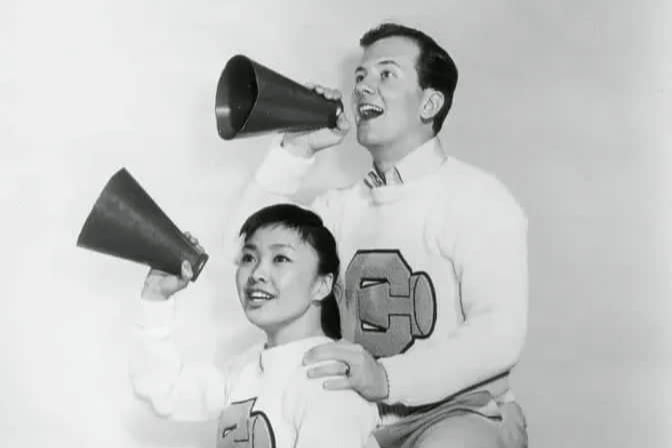
Pat Boone’s squeaky-clean image and pop-star appeal made him a natural fit for television in the late 1950s. Backed by Chevrolet, his variety show combined music, light comedy, and appearances from some of the biggest names of the time. While it never took bold creative risks, the program succeeded by offering wholesome, reliable entertainment that families could watch together. Boone’s friendly persona and ability to connect with audiences helped the show remain popular throughout its three-year run. Though short-lived compared to some of its peers, The Pat Boone Chevy Showroom captured the optimistic, polished spirit of its time and cemented Boone’s role as a television personality as well as a singer.
Pat Boone’s variety series embodied the wholesome image television networks sought to project during the 1950s. Known as a clean-cut pop singer, Boone’s show appealed particularly to younger audiences who were still considered too impressionable for edgier programming. A key feature of the series was its spotlight on musical duets, where Boone frequently performed with major stars of the day, offering audiences unexpected collaborations. Chevrolet’s sponsorship tied the program firmly to Americana, presenting Boone as both entertainer and cultural symbol of stability during a rapidly changing decade. Unlike other variety hosts who emphasized comedy or satire, Boone’s strength was in his polished performances and consistency, which helped him remain a household figure even after the series ended. His show reflected how television was becoming a powerful tool for shaping the careers of recording artists, turning singers into full-fledged TV personalities.
20. Closing Thoughts
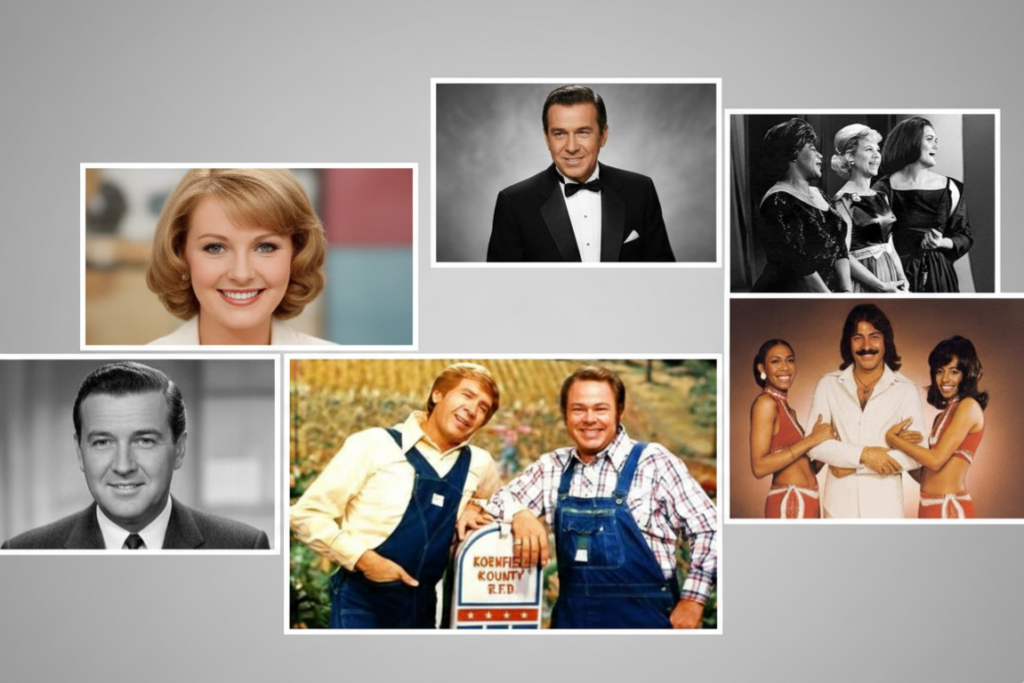
The variety hour was once the crown jewel of American television, part comedy, part concert, part spectacle, and always centered on the star who held it all together. These programs required enormous effort behind the scenes, from rehearsals to live staging, but they delivered unforgettable moments that drew entire families around the TV each week. As tastes shifted and production costs soared, the format eventually faded, but its influence can still be felt in late-night shows, sketch comedy, and televised concerts today. For a few shining decades, these variety hours made television feel like a shared national stage, bringing music, laughter, and entertainment into millions of homes.
This story The Golden Age of U.S. Variety Hour Television: 20 Shows That Ruled the Airwaves was first published on Daily FETCH


